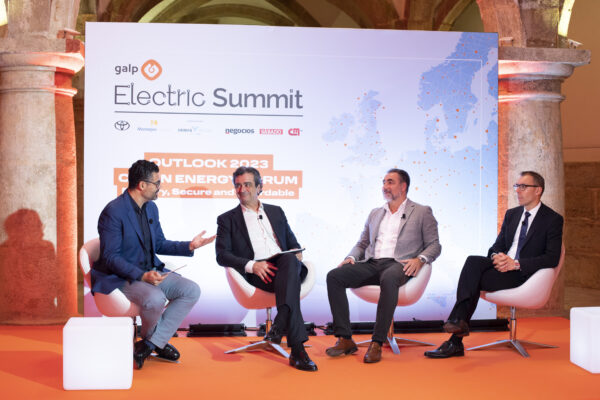What does energy transition mean?
The energy transition the world is facing goes way beyond changing our energy sources or fuels. Switching from an energy matrix centred around fossil fuels to one with zero or low carbon emissions, based on renewable sources, will have an impact on the climate, on the economy and on how society is organised.
Data from the World Meteorological Organization (WMO) show that the last six years have been the hottest since 1880, with the highest temperatures recorded in 2016, 2019 and 2020. Indeed, the year 2020 was 1.2 °C warmer than pre-industrial levels. The WMO predicts that this trend will increase by 20% as early as 2024. As Pascal Peduzzi, the director of the United Nations Environment Programme, GRID-Genebra, said earlier this year “The speed at which temperatures are increasing is alarming. At this rate, we may reach +1.5 ºC in the next 15 years”.
What’s the real impact of this temperature rise? As well as causing glaciers to melt and sea levels to rise, global warming triggers other climate changes, such as desertification and an increase in phenomena such as hurricanes, floods and forest fires, causing incalculable damage to the planet.
A paper by the French National Centre For Scientific Research (CNRS), published in Nature magazine, points towards a loss of 267 billion tonnes in mass of ice a year since 2000. Researchers found that glacier shrinkage has accelerated over the last few years, rising from an annual melt of 227 billion tonnes between 2000 and 2004 to 298 billion from 2015 to 2019.
The famous Paris Agreement
In an effort to combat this phenomenon, the European Union Member States signed the Paris Agreement in 2015, where they committed to limit global warming to below 2 °C, preferably 1.5°C, compared to pre-industrial levels. Each country which signed up to the agreement set a goal, known as a Nationally Determined Contribution (NDC), to reduce greenhouse gases by 2030. Last year in Glasgow, this commitment was strengthened, with signatories undertaking to achieve Carbon Neutrality by 2050.
In January of this year, the United Nations Secretary-General, António Guterres, warned that 2021 was a critical year for the climate, and challenged UN member states to submit their NDCs to reduce global emissions by 45% by the year 2030, compared with 2010 levels. He further asked donors and development banks to earmark more financial resources for this adaptation, from a figure of 20% to at least 50% by 2024, and insisted that developed countries make good on their commitment to mobilise 100 billion dollars annually towards climate action in developing countries.
The role of energy transition
Experts are in no doubt that man-made greenhouse gases are the main cause of global warming, meaning that energy transition is a vital step on the path towards protecting the planet from this threat. This transition involves switching from an energy matrix which is focused on fossil fuels to one which has zero or low carbon emissions, based on renewable sources.
Indeed, it’s not the first time global economic societies have dealt with an energy transition. In the 19th Century we shifted from wood to coal. And in the 20th Century we dropped coal in favour of oil. The big difference with the current transition, and the challenge and urgency in making the change, is that the planet has never before been in such danger.
The energy transition the world is facing goes way beyond changing our energy sources or fuels. It will have an impact on the climate, obviously on the economy and on how society is organised. We’re talking about the digitalisation and intelligence of networks which pave the way towards new services which will fulfil the needs of a whole new breed of consumer. We’re talking about renewable sources, electric mobility and social sustainability, in order to find new ways of working to help the switchover to the different jobs required in this new world. Because inclusion also has to be a part of this transition towards a future with a distributed generation which is cleaner and renewable.
The impact of the war on European energy transition
In addition to environmental challenges, the world is now being blighted by a state of war. On 8th March 2022, a little after the Russian invasion of Ukraine, the European Commission unveiled its REPowerEU initiative. This plan, which aims to ensure that Europe is no longer dependent on Russia’s fossil fuels before 2030, focuses mainly on Russian gas, and proposes measures geared not only towards responding to higher energy prices in Europe, but also towards safeguarding next winter’s gas reserves.
Among other aspects, this initiative aims to diversify gas supplies, and includes measures to ensure that demand for Russian gas is reduced by two thirds by the end of 2022. REPowerEU envisages a series of actions which will allow a gradual reduction of at least 155 billion cubic metres of fossil gas use, which is equivalent to the volume imported from Russia in 2021.
Put succinctly, this initiative was considered crucial, given the current geopolitical backdrop and taking into account that the EU imports 90% of its gas consumption, with Russia providing around 45% of those imports. For these reasons, the president of the European Commission, Ursula von der Leyen, emphasised that “we must become independent from Russian oil, coal and gas. We simply cannot rely on a supplier who explicitly threatens us.”
Kadri Simson, the Commissioner for Energy, is in no doubt that “Russia’s invasion of Ukraine has aggravated the security of supply situation and driven energy prices to unprecedented levels”, and adds that “the Commission will therefore propose that by 1st October, gas storage in the EU has to be filled up to at least 90%”.
On the topic of energy, in May Ursula von der Leyen stated that “the war is, as we all see, heavily disrupting the global energy market”, demonstrating Europe’s dependence on imported fossil fuels. “But it also shows how vulnerable we are to rely on Russia for importing our fossil fuels. We must now reduce as soon as possible our dependency.” This initiative is already having practical effects, since, according to the EU, last year 40% of the imported gas was imported from Russia to the European Union. Ursula von der Leyen adds, “This year already, in April, we were down to 26%. So it is going in the right direction but we have to accelerate.”











